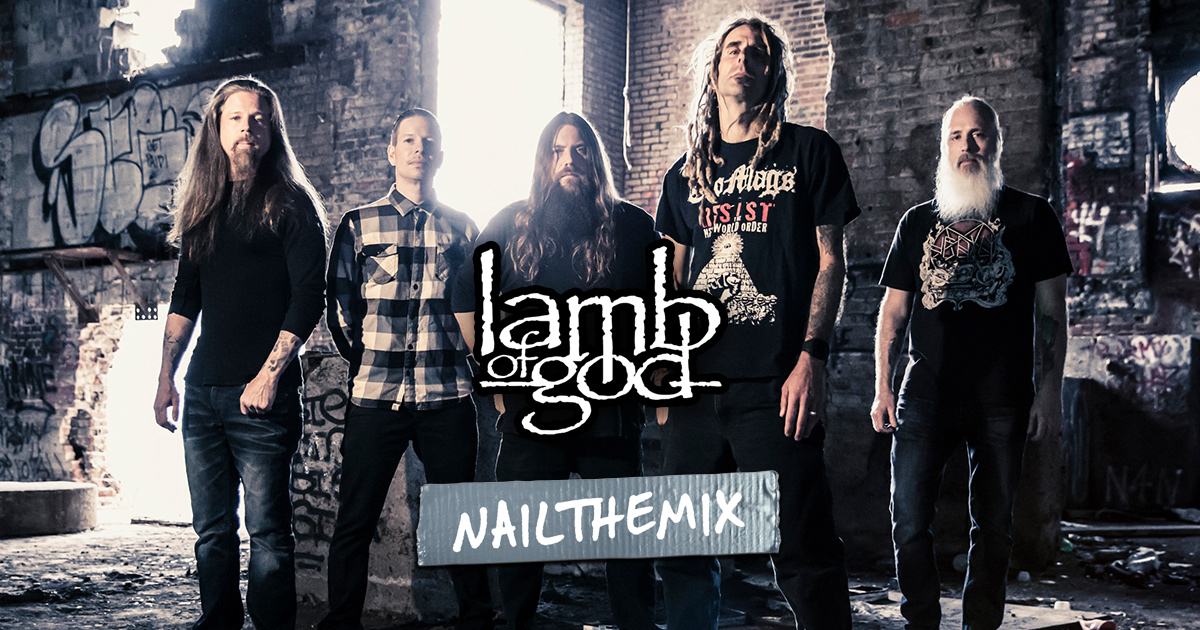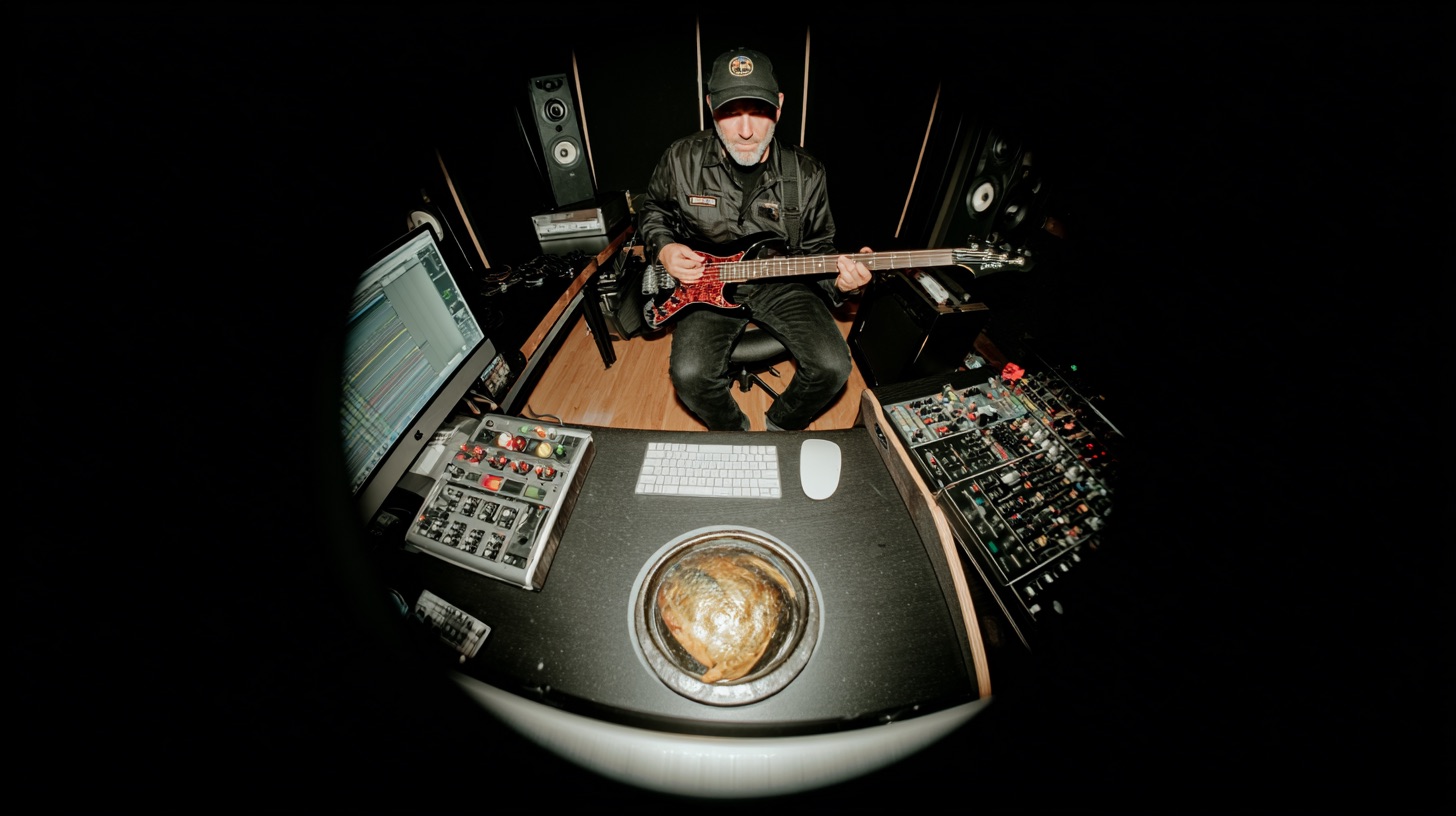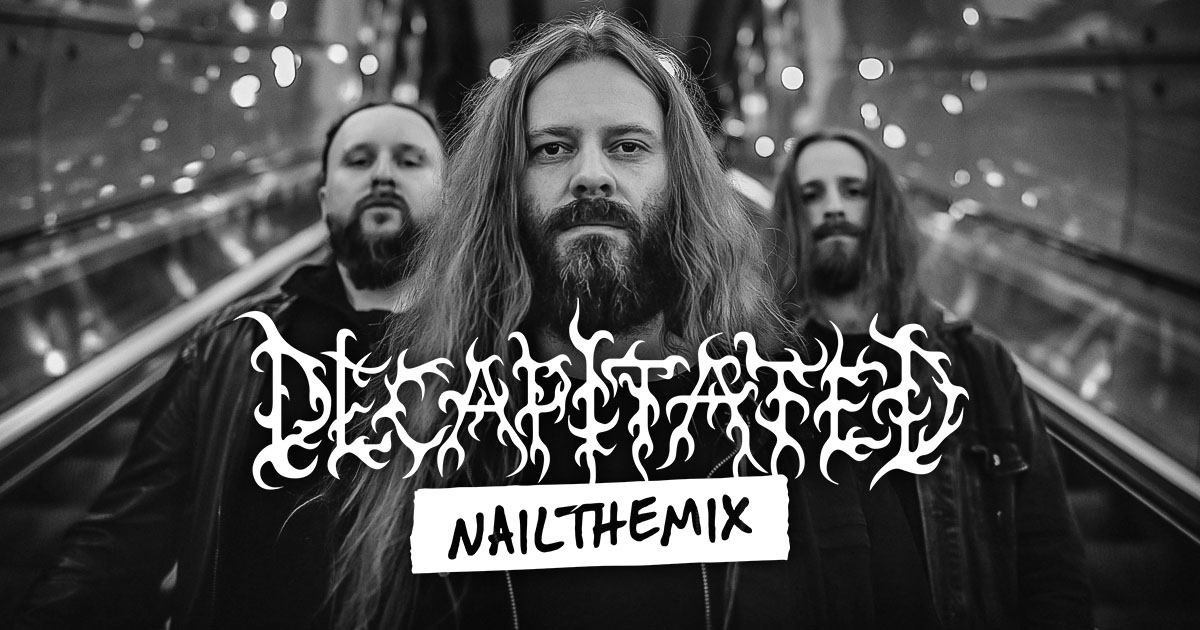
Deconstructing Lamb Of God’s ‘Redneck’ Raw Multitracks
Nail The Mix Staff
Let’s be real for a second. When you hear the opening riff of “Redneck” by Lamb of God, you’re hearing an absolute institution of modern metal. The track, from their gold-certified album Sacrament, is a masterclass in aggression, groove, and precision, all mixed to perfection by the legendary producer Machine. But what if you could peel back the layers and see what made those tracks so powerful before the mix?
We got our hands on the raw, unprocessed multitracks, and what they reveal is that the secret to this song’s power isn’t just fancy mix plugins. It’s world-class performance, airtight arrangements, and incredibly smart recording decisions. The foundation is so solid that the mix engineer’s job is less about fixing things and more about not messing it up.
Let’s break down the key elements that make these raw tracks punch so hard, from the surgically precise drums to the iconic vocal layers. You can learn more about how the pros get these sounds at Nail The Mix.
The Truth About Chris Adler’s Overdubbed Drums
Listening to Chris Adler’s isolated drum tracks is an experience. With 21 tracks of pure rhythmic force, the first thing you’ll notice is the incredible clarity and control. There’s a reason you can hear every ghost note and cymbal choke on the record, and a big part of that comes down to a specific recording philosophy: overdubs.
Beyond the Myths: Overdubbing for Control
Now, when some producers hear “drum overdubs,” they might think it’s a shortcut or a way to fake a performance. With a drummer like Chris Adler, it’s the exact opposite. This technique is only possible with an elite-level player who has impeccable timing and a deep understanding of their parts. Bad drummers can’s do this; it would sound like a mess.
The goal here is ultimate control and separation. By recording elements like cymbals separately from the shells, you eliminate bleed almost entirely. This gives the mix engineer a pristine canvas to work with, allowing them to process each part of the kit without compromise. For example, you can heavily compress the snare room mic without the cymbal wash going crazy.
Expert Kick Drum Arrangement
This is where the arrangement genius really shines. Instead of just one or two kick mics, the session is broken down for maximum impact.
- Main Kick: This track handles the core, single-kick hits that drive the groove.
- Double Kicks (L/R): Separate tracks for the fast double-bass sections.
- Typewriter Sample: A subtle sample layered underneath the doubles to add consistency and clicky attack.
But here’s the killer detail: in certain riffs, key kick hits are placed on a dedicated “emphasis track” to perfectly double cymbal accents. For example, during a syncopated pattern, instead of letting the continuous “typewriter” sample handle all the notes, the main, powerful kick sound is used only on the accents. This creates a huge dynamic shift and makes the riff feel more powerful and intentional. It’s not just playing the pattern; it’s orchestrating the drums for dramatic effect.
Taming the Beast with Cleaned Tracks
Every part of the kit is designed for clarity. The tom tracks are cleanly edited, likely gated or stripped of silence to remove any spill from the rest of the kit. The “overheads” are really just dedicated cymbal mics, and there are multiple room mic options (like a dedicated snare room) tailored to specific parts of the kit. This surgical approach is fundamental to creating a mix where every single hit can be felt. Learning to clean and separate your tracks is a key part of modern metal production, and you can get deep into these techniques with advanced EQ strategies.
Dialing In Lamb of God’s Guitar and Bass Tones
With a rhythm section this tight, the guitars and bass have to be perfectly locked in. Sloppy playing simply wouldn’t work over a foundation this precise.
Less Gain, More Fingers: The Guitar Tone Secret
One of the most surprising things about the raw guitar tracks is the gain level. It’s a medium-to-low gain tone. This isn’t a wall of oversaturated fizz. The aggression, clarity, and punch come from the players’ hands—their attack, their precision, and their sheer force. It’s a perfect example of how the best metal players don’t need to hide behind excessive distortion to sound heavy. The power is in the performance.
The Locked-In Bass Foundation
The bass setup is simple but brutally effective: one DI track and one Amp track. The tone is solid and aggressive, but the most important quality is its relationship with the drums. The bass and kick drums are completely dead-locked, moving as a single, thunderous unit. This is the definition of a tight rhythm section. When your foundation is this solid, you create an unbreakable grid for the rest of the mix. Making bass and drums sit together this well often comes down to smart bus processing and compression.
Smart Layers: The “Milky” Wah Riff
Great production is often found in the small details. During a descending riff, there are subtle “wah” guitar layers added on top of the main rhythm guitars. These aren’t front-and-center lead parts; they’re textural layers that add a “milky,” fluid character to the riff, elevating it from great to exceptional. It’s a reminder that even in heavy music, small arrangement choices can make a huge impact on the final sound.
Building Randy Blythe’s Iconic Vocal Stack
Randy Blythe is one of the most recognizable vocalists in metal. His raw main vocal track is a testament to that—it’s instantly identifiable and powerful enough to carry the song on its own. But in the chorus, a clever layering technique creates that massive, anthemic sound.
The “Invitation” Chorus Layers
For the iconic line, “This is a motherfucking invitation,” the sound is built from a carefully constructed vocal stack:
- One Central Growl: This is the main, brutal, low-register performance that provides the weight and aggression.
- Four Pitched Screams: Layered with the growl are four separate takes of a higher-pitched, more melodic scream.
By blending these different textures, you get the best of both worlds: the raw power of the growl and the harmonic character of the pitched screams. This is why the chorus feels so huge and memorable. It’s a technique used by many top-tier bands to create vocals that are both brutal and catchy.
Bringing It All Together
Deconstructing the raw multitracks for “Redneck” shows that a legendary metal mix starts long before the faders go up. It’s built on:
- Expertly arranged and performed drums, using overdubs for maximum clarity.
- Guitars that get their power from the player, not just from high gain.
- A rhythm section that is flawlessly tight.
- Smart vocal layering to create a massive chorus sound.
Analyzing these techniques is a great start. But imagine watching a pro like Machine or other top metal producers actually mix tracks like these from scratch, explaining every EQ move, compression setting, and automation pass.
Lamb Of God on Nail The Mix
Machine mixes "Redneck"
Get the Session
At Nail The Mix, you get the raw multitracks from Lamb of God and can watch Machine mix “Redneck” from the ground up in an exclusive masterclass. You get to see exactly how a pro takes these incredible raw tracks and turns them into a finished, polished metal anthem. Want to take your own mixes beyond presets? Check out our free training on modern metal mixing.
Click here to get the “Redneck” multitracks and the full mixing session with Machine!
Get a new set of multi-tracks every month from a world-class artist, a livestream with the producer who mixed it, 100+ tutorials, our exclusive plugins and more
Get Started for $1






